Swiss Seismological Service (SED)
The Swiss Seismological Service (SED) at ETH Zurich is the federal agency for earthquakes. Its activities are integrated in the federal action plan for earthquake mitigation.
Did you feel an earthquake? Report an earthquake
Help, the earth is shaking! What to do in case of an incident?
Felt Earthquakes in Switzerland
|
Local Time |
Mag. |
Location |
Felt? |
|---|---|---|---|
| 2024-07-25 19:55 | 2.3 | Schluchsee D | Slightly felt |
| 2024-07-22 18:14 | 2.4 | Scuol GR | Probably not felt |
| 2024-07-16 13:21 | 2.2 | Les Diablerets VD | Probably not felt |
| 2024-06-27 03:06 | 4.2 | Laufenburg | Widely felt |
Latest Earthquakes
|
Local Time |
Magnitude |
Location |
|---|---|---|
| 2024-07-26 22:34 | 1.8 | Lac de Vouglans F |
| 2024-07-26 12:27 | 1.1 | Arolla VS |
| 2024-07-26 07:37 | 0.9 | Scuol GR |
| 2024-07-26 04:34 | 1.2 | Scuol GR |
Recent earthquakes magnitude 4.5 or greater
|
Time (UTC) |
Mag. |
Region |
|---|---|---|
| 2024-07-25 21:35:43 | 4.5 | Western Iran |
| 2024-07-22 14:39:22 | 4.9 | Turkey |
| 2024-07-21 16:43:15 | 4.5 | Central Mediterranean S |
| 2024-07-21 04:01:28 | 5.0 | Crete, Greece |
| 2024-07-16 15:40:47 | 4.7 | Western Iran |
| 2024-07-11 03:24:43 | 4.6 | Turkey |
| 2024-07-10 09:54:34 | 4.5 | Turkey |
| 2024-07-09 22:20:47 | 5.0 | Svalbard Region |
| 2024-07-06 17:34:31 | 4.5 | Southern Greece |
| 2024-06-28 23:00:15 | 4.6 | Western Iran |
| 2024-06-26 06:03:36 | 4.5 | Jan Mayen Island Region |
| 2024-06-26 01:47:34 | 4.5 | Jan Mayen Island region |
| 2024-06-24 22:36:43 | 4.7 | Turkey |
|
UTC Time |
Magnitude |
Location |
|---|---|---|
| 2024-07-22 05:04:30 | 6.0 | Vanuatu Islands |
| 2024-07-21 04:27:43 | 6.0 | Hokkaido, Japan region |
| 2024-07-21 02:53:49 | 6.2 | Guatemala |
| 2024-07-19 03:13:48 | 6.0 | Fox Islands, Aleutian Islands, United States |
| 2024-07-19 01:50:46 | 7.3 | Chile-Argentina border region |
| 2024-07-11 15:08:48 | 6.4 | Vancouver Island, Canada, region |
| 2024-07-11 02:13:18 | 7.1 | Mindanao, Philippine Islands |
| 2024-07-10 04:55:43 | 6.7 | South of Africa |
2024-07-09
How humans can set off seismometers
Seismic stations record any kind of ground motion, and therefore much more than just earthquakes. Our measurements are dominated by ambient seismic noise. These are vibrations caused by distant ocean waves, atmospheric pressure changes, or anthropogenic events such as blasts in quarries, traffic, construction work or explosions. This noise can be used to image the Earth beneath us, or to estimate the extent to which the local subsurface can amplify seismic waves.
Where relevant or necessary, this data can also be used to draw conclusions about events with a seismic footprint. US singer Taylor Swift's concert in Zurich on 9 June was one such event (others occurred on dates when she performed elsewhere). When a lot of people move rhythmically at the same time, this energy is transferred into the ground as harmonic vibrations and can be measured by nearby seismometers. The vibrations caused by the concert audience were visible at eight stations in the seismic network within a 6 kilometre radius of the Letzigrund Stadium. Beyond that, they got lost in other background noise. Previously, other large concerts or football matches have left similar marks on the seismic data.
Read more...How clearly human motion can be made out in the background noise depends on a number of factors. For example, there is the distance from the nearest seismic station. One person jumping immediately next to a seismometer will be enough to bring about visible fluctuations. As the distance from the seismometer increases, a larger number of people moving will be needed to produce this effect. For instance, if Switzerland had won the 2024 European Football Championship, families leaping up from their sofas would not have been reflected in the seismic data, whereas the enthusiasm of fans at large-scale public viewings might have been picked up. The subsurface is also a factor here. If crowds move about rhythmically on a soft subsoil, such as the gravel deposits of the Limmat Valley, the vibrations are stronger than on harder rock, although they are also attenuated more quickly with distance. The ground motion is further amplified when people cause a structure, such as a stand, to vibrate at its resonant frequency. Of course, the opposite effect can also be observed. For instance, the measures taken to combat the spread of COVID-19 led to a worldwide reduction in seismic noise caused by human activity from early to mid-2020 (SED news item).
As to whether Taylor Swift generates more or less enthusiasm than other acts or a football match also resulting in measurable seismic vibrations, this cannot be reliably determined from the seismic data.
2024-07-09
Rapid impact assessments now available
From now on, the Swiss Seismological Service (SED) at ETH Zurich will publish a rapid impact assessment for any earthquake with a magnitude of 3 or more. This will inform emergency services, authorities and the public about the expected human and financial consequences of earthquakes that are felt over a wide area or cause damage, doing so shortly after these quakes occur. The assessments are based on the relevant quake parameters and the earthquake risk model of Switzerland published in 2023.
After a severe earthquake, emergency services must rapidly obtain a picture of the situation in order to deploy their resources as efficiently as possible. Rapid impact assessments contribute to this process, especially in the hours immediately after an earthquake when only limited or incomplete information is available from the affected area. It is also very important to keep the public informed in such a scenario. Although large-scale damage is only anticipated for earthquake magnitudes of around 5 or above, the SED already publishes a rapid impact assessment for smaller quakes with a magnitude of 3 or more. This helps to ensure that the whole process from creation through to application can be enacted and practised on a regular basis. On average, damaging earthquakes occur in Switzerland only every 8 to 15 years.
Read more...The rapid impact assessment values given are automatically generated estimates based on the earthquake risk model of Switzerland. However, the actual extent of the damage may differ considerably from these estimates, and the accuracy of any information is not guaranteed. There may be changes, for example, if the earthquake parameters underlying the impact assessment are updated during the detailed analysis. The decisive factor in the calculations is the modelled impact of the quake on potentially affected buildings. This makes it possible to estimate the approximate number of fatalities and people injured and seeking protection as well as the costs of damage to buildings. Different occupancy patterns depending on the time of day and seasonal occupancy fluctuations are currently not taken into account here, nor are human and financial losses resulting from damage to infrastructure (e.g. bridges, railway lines) or secondary damage (e.g. fire, landslides). In addition, rapid impact assessments of aftershocks disregard the damage that has already occurred and any increased vulnerability of buildings due to previous earthquakes.
As well as a publicly available overview of the expected consequences of the earthquake at national level, authorities and the Earthquake Damage Organization (EDO) will have access to cantonal overviews, showing the anticipated consequences of a quake for each canton and its communes. Access to the cantonal overviews is limited because the uncertainties at this level are even greater than at national level, meaning that the values need to be interpreted with due caution. The SED usually publishes the national overviews on its website (www.seismo.ethz.ch) within an hour of a quake, i.e. as soon as the data can be prepared.
Further information on rapid impact assessments can be found here.
2024-06-27
[Available in DE/FR] Erdbeben bei Laufenburg (AG)
Am Donnerstagmorgen, dem 27. Juni 2024, hat sich um 03:06 Uhr (Ortszeit), 15 km nördlich der Schweizer Grenze in einer ungefähren Tiefe von 8 km ein Erdbeben der Magnitude 4.2 ereignet.
Beim Schweizerischen Erdbebendienst an der ETH Zürich sind bereits in der Nacht über 1'200 Verspürtmeldungen eingegangen. Das Beben war im nördlichen Aargau deutlich spürbar und stark genug, um einen Teil der Bevölkerung zu wecken (Intensität IV). Die meisten Meldungen kamen aus Liestal, Schaffhausen, Möhlin, Pratteln und den umliegenden Gebieten. Vereinzelt wurde das Beben einem Umkreis von über 100 km um das Epizentrum verspürt. Innerhalb weniger Minuten wurden in der unmittelbaren Umgebung bereits 2 Nachbeben der Stärke 1.7 und 1.4 gemessen. Bislang wurden keine Schäden gemeldet.
Read more...Erdbeben sind in dieser Region nicht ungewöhnlich. Das letzte spürbare Beben im Raum nördlich von Laufenburg wurde am 12. März 2018 mit einer Magnitude von 3.1 in 17 km Tiefe registriert, ebenso eines in Zell (20 km vom heutigen Beben entfernt) am 5. Mai 2009 mit einer Magnitude von 4.2 in 12 km Tiefe.
Es kann mit weiteren Nachbeben gerechnet werden. Solche Nachbeben treten üblicherweise nach stärkeren Beben auf, wobei die Häufigkeit und die Stärke dieser Ereignisse mit der Zeit abnimmt. Weitere Beben mit einer ähnlichen oder gar grösseren Magnitude wie das Beben um 3:06 Uhr sind zwar unwahrscheinlich, aber nicht auszuschliessen.
2024-06-04
[Available in DE/FR] Verspürtes Beben im Sihltal (SZ)
Ein Beben der Magnitude 4.4 ereignete sich am Dienstag, 4. Juni 2024, um 2:34 Uhr (Ortszeit) im Sihltal (SZ), rund 12 km südöstlich von Einsiedeln in einer sehr geringen Tiefe von ungefähr einem Kilometer. Weil sich das Beben so nahe der Erdoberfläche ereignet hat, war es im Epizentralgebiet stark zu spüren, jedoch gemessen an seiner Stärke in einem vergleichsweise geringen Umkreis. Dies belegen die ungefähr 130 Verspürtmeldungen, die in der ersten halben Stunde nach dem Beben beim Schweizerischen Erdbebendienst (SED) an der ETH Zürich eingegangen sind und praktisch alle von einer Epizentralentfernung von weniger als 30 km kamen. Auch typisch für solch untiefe Beben ist, dass sie teilweise als Knall und weniger als Bodenerschütterung wahrgenommen werden. Bei einem Erdbeben dieser Stärke können vereinzelt kleinere Gebäudeschäden (z.B. Risse im Verputz) bei den verletzlichsten Gebäuden auftreten.
Read more...Es kann mit Nachbeben gerechnet werden. Solche Nachbeben treten üblicherweise nach stärkeren Beben auf, wobei die Häufigkeit und die Stärke dieser Ereignisse mit der Zeit abnimmt. Weitere Beben mit einer ähnlichen oder gar grösseren Magnitude wie das Beben um 2:34 sind zwar unwahrscheinlich, aber nicht auszuschliessen. Beben mit einer Magnitude von 4 oder mehr treten in der Schweiz im Schnitt alle ein bis zwei Jahre einmal auf. Das letzte Beben mit einer vergleichbaren Stärke (Magnitude 4.4) in dieser Region ereignete sich am 25. Oktober 2020 bei Elm (GL). Das letzte verspürte Beben im Kanton Schwyz ereignete sich am 4. März 2015 östlich der Kantonshauptstadt. Es hatte eine Magnitude von 2.8.
Earthquake
Help, the Earth Is Shaking!
Earthquakes are inevitable, but the damage they may be expected to cause can be mitigated in relatively simple ways. Find out the recommended behaviour before, during and after a powerful earthquake.

Knowledge
Earthquake Country Switzerland
Switzerland experiences between 1'000 and 1'500 earthquakes a year. Swiss citizens actually feel somewhere between 10 and 20 quakes a year, usually those with a magnitude of 2.5 or above. Based on the long-term average, 23 quakes with a magnitude of 2.5 or above occur every year. Find out more about the natural hazards with the greatest damage-causing potential in Switzerland.
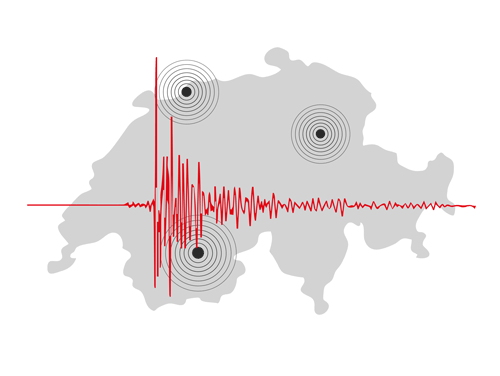
Alerting
Always Informed
If you want to be kept informed at all times, here you will find an overview of the various information services provided by the Swiss Seismological Service (SED).
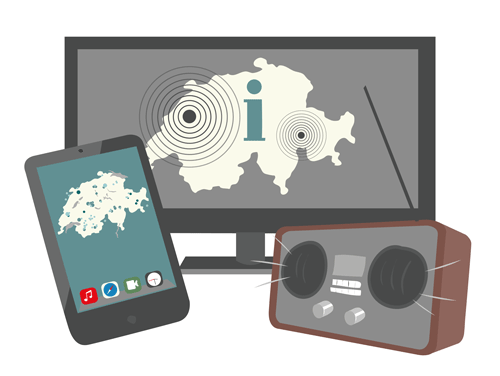
Knowledge
Earthquake Hazard
In Switzerland, earthquakes are the natural hazard with the greatest potential for causing damage. They cannot currently be prevented or reliably predicted. But, thanks to extensive research, much is now known about how often and how intensely the earth could shake at a given location in the future. Consult a variety of different maps using our interactive web tool to find out how likely certain earthquakes are in Switzerland.
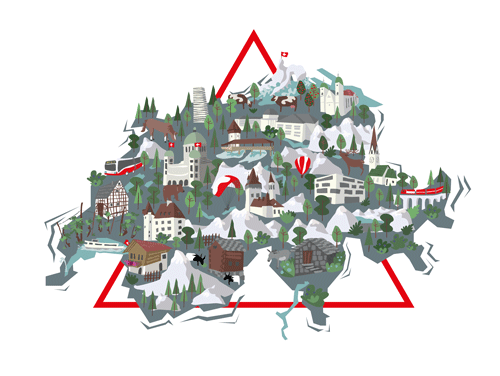
Research & Teaching
Fields of Research
We are often asked what staff at the SED do when no earthquakes are occurring. The answer is they conduct research in a variety of fields, constituting SED's main scientific activities described in our research field section.
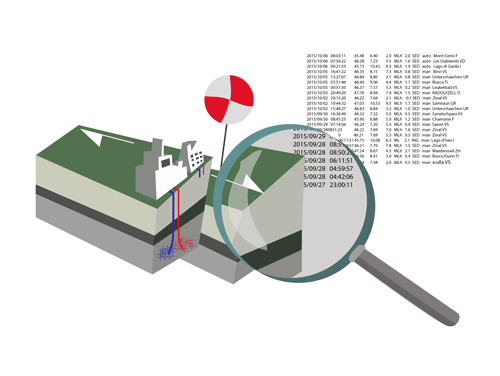
About Us
Swiss Seismological Service (SED)
The Swiss Seismological Service (SED) at ETH Zurich is the federal agency responsible for monitoring earthquakes in Switzerland and its neighboring countries and for assessing Switzerland’s seismic hazard. When an earthquake happens, the SED informs the public, authorities, and the media about the earthquake’s location, magnitude, and possible consequences. The activities of the SED are integrated in the federal action plan for earthquake mitigation.
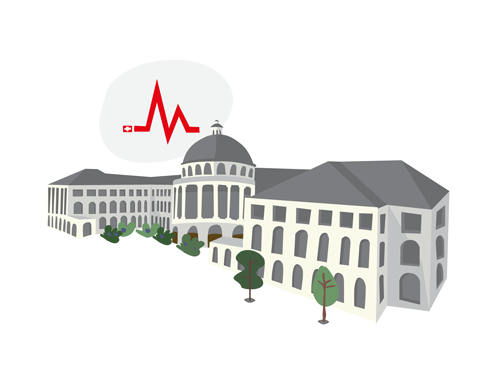
Earthquakes
Earthquake Monitoring
Around 10 to 20 times a year you will hear or read about an earthquake occurring in Switzerland. However, the vast majority of quakes recorded by the SED go unnoticed by the general public because they fall below the threshold of human perception and can only be detected by sensitive measuring devices. The Swiss Seismological Service (SED) operates a network of more than 200 seismic stations across Switzerland.
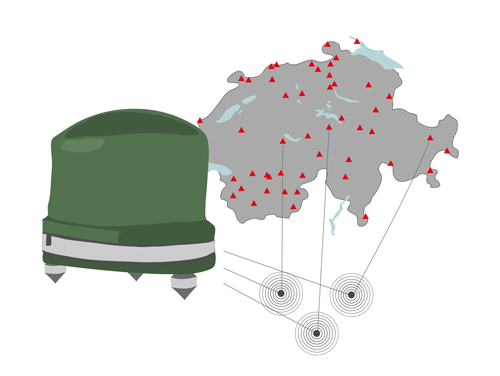
Research and Teaching
Products and Software
Go to our Products page for access to seismic data and various apps.
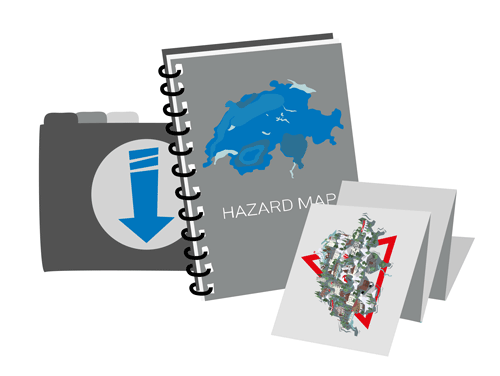


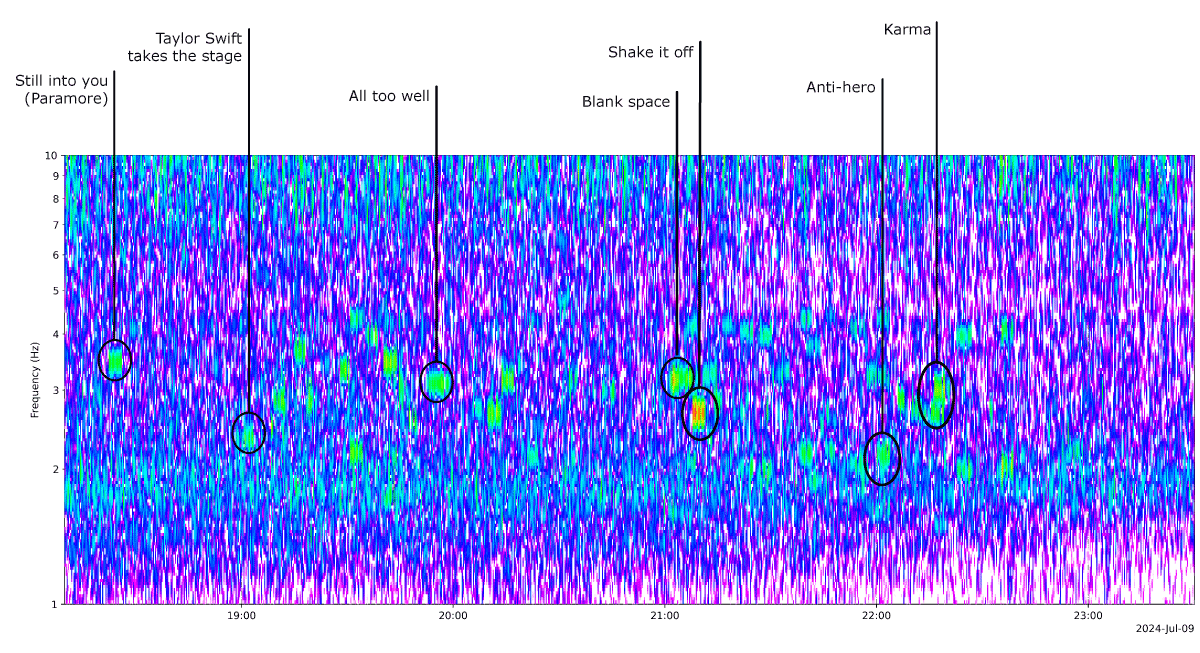

![[Available in DE/FR] Erdbeben bei Laufenburg (AG) [Available in DE/FR] Erdbeben bei Laufenburg (AG)](/export/sites/sedsite/home/.galleries/img_news_2024/Laufenberg2024.png_2063069299.png)
![[Available in DE/FR] Verspürtes Beben im Sihltal (SZ) [Available in DE/FR] Verspürtes Beben im Sihltal (SZ)](/export/sites/sedsite/home/.galleries/img_news_2024/20240604_Studen_image_FR.png_2063069299.png)